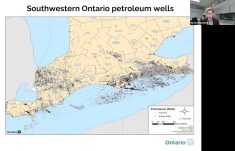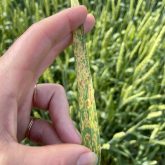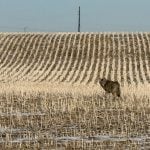Although Agricultural Safety Week was observed March 12-18, now is the time for heightened awareness and planning.
Agriculture is one of the most dangerous professions, yet larger farming operations and increased pressure to get crops planted can translate to anxiety and tension, and can distract producers from the hazards they face.
“It’s ‘go time’, so they go, but we need to be careful with ‘go time,’ to take care of the people,” says Dan Carlow, manager of innovation, engineering and program delivery with the Ontario Ministry of Agriculture, Food and Rural Affairs.
Read Also

Women who fed a nation
More than 40,000 young women supported the war effort between the 1940s and early 1950s, helping grow and harvest crops amid labour shortages. They were called Farmerettes.
“Be careful and be kind to yourselves. We tend to focus on the machinery and the products — seed and the newest and latest things, but we forget about the people. We need to slow down, plan ahead and control the controllable.”
Why it matters: Safety considerations can be overlooked in the rush to plant while the weather is good.
Every year in Ontario, 5.2 million acres are planted to crops, and it’s all done in about six weeks. The hazards are many, from larger machines on roads and the hazards of excessive speed to the dangers connected to high-pressure hydraulic lines.
Redesigns to better-protect exposed power take-off shafts and a reduction in use of anhydrous ammonia have helped reduce risk and personal protection equipment has become a necessity on almost all operations.
“But farmers don’t always talk about PPE,” says Carlow. “Some farms are stocked with those, some aren’t or some don’t know how it should be maintained. Following those safety guidelines creates less angst, yet there are those who say, ‘I got away with it before.’ OK, but can they get away with it again?”
Manure tank cleanouts and toxic gases are another problem on the farm. Carlow points to a recent fire and explosion at a dairy operation near Dimmit, Texas, that injured one employee and killed more than 18,000 cows. It’s believed equipment used in manure management overheated and ignited accumulated gases.
Carlow says this type of accident emphasizes the need to understand that it’s not enough to plan for what’s likely to happen. Farmers need to plan for what could happen. Self-contained breathing apparatus is another necessity on many livestock operations.
Picking up the slack
Safety and advanced planning are important to Erin McGregor. As Syngenta’s stewardship and policy manager, she acknowledges the need for continuous messaging with an emphasis on crop protection products.
With tighter planting windows and the need to control weeds, pests and diseases, over and above getting seeds into the ground, there’s more urgency to focus on doing the job safely.
“Continual refresh and focus on best practices around pesticide safe use is always valuable, along with keeping an ongoing open dialogue around safety in general,” says McGregor. “It’s really core to creating a health and safety culture.”
She praises the comprehensive nature of pesticide education, training and certification in Ontario along with the Canadian Agriculture Safety Association and its work to organize Canadian Ag Safety Week every March. She stresses the need for awareness of product labels and the information they provide on use and safe handling.
“We’re also reminding our staff this spring about requirements and safe practices related to the transportation of chemicals and pesticides, about having first aid kits in their vehicles, portable eyewash options and spill kits,” says McGregor.
“Planning is a huge part of the work of a producer, so being safety oriented and motivated, having safety risk assessment documents and a proper plan in place are all very important.”















